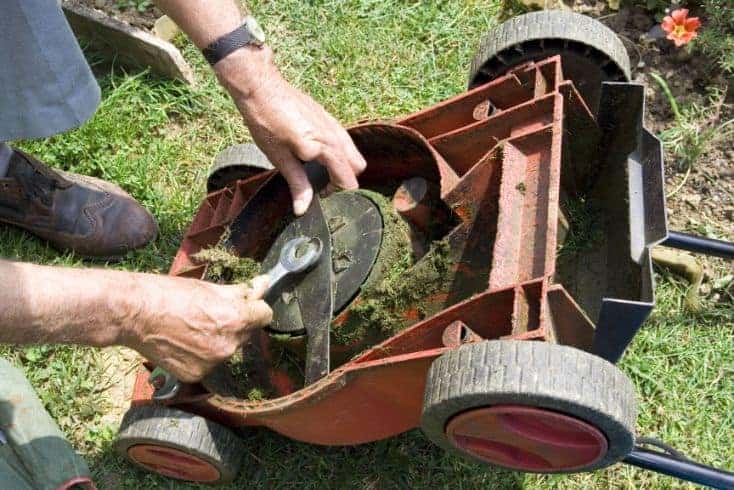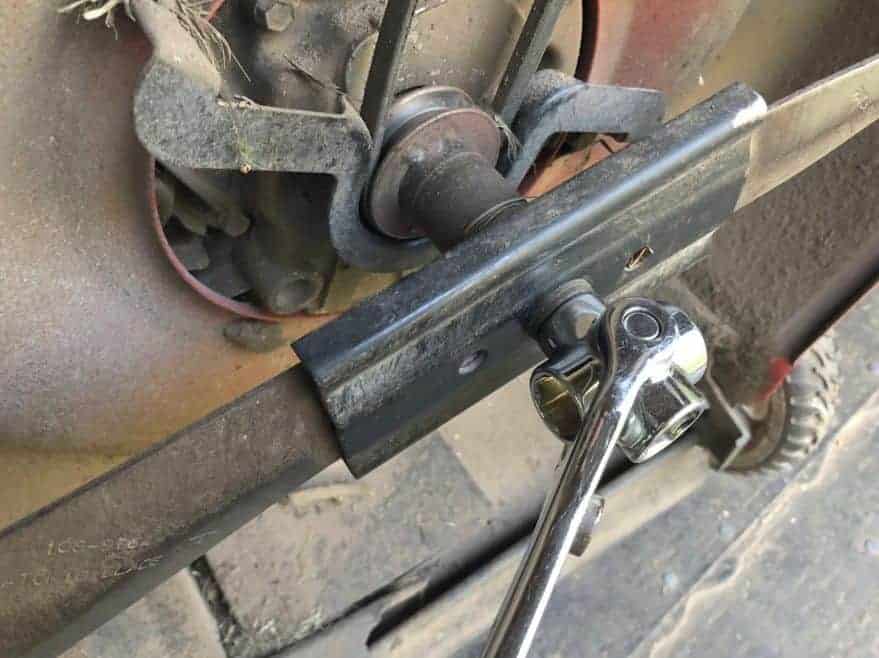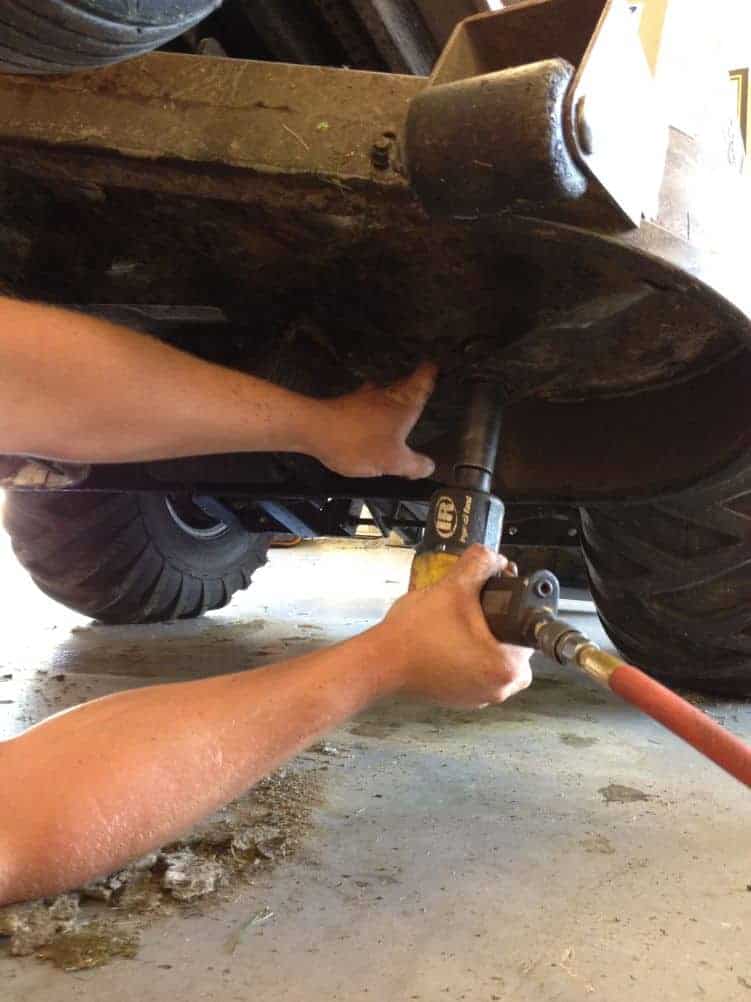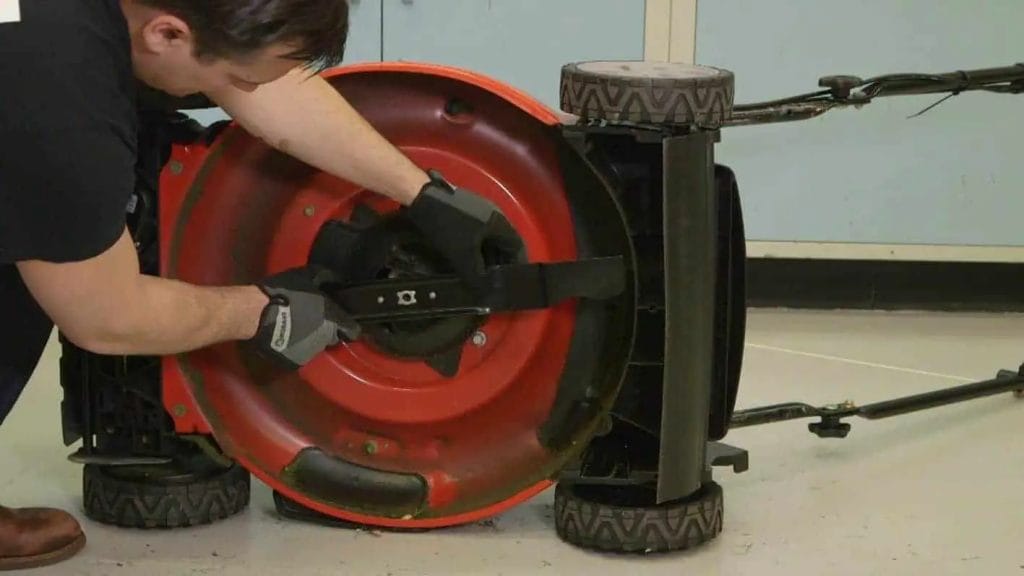A lawn mower is an essential tool to maintain the health of a lawn. For it to maintain the lawn in tip top condition a lawn mower must have a "healthy" sharp cutting blade. If the blade has nicks in it or is blunt, more likely than not it will take longer to mow the lawn, and the end result may look ragged, "scalped" in some places and plain unhealthy in others.

Most people overlook their lawn mower's blade. A cutting blade should be inspected for nicks on a regular basis, and sharpened at least once a year.
Lawn mower blade sharpening doesn't have to mean taking it too the Garden centre or service centre and paying someone to suck through their teeth, and then charge a king's ransom for fifteen minutes work. It can all be done at home.
Blade sharpening, along with cleaning of vents on lawn mowers etc, should be part of a wintertime maintenance programme. Making sure that lawnmowers and other garden tools are in peak condition for summer.
There are two ways of approaching blade sharpening. One is to remove the blade from the mower altogether sharpen it using a bench grinder and other tools; this is ideal for those of us who have a fully kitted out workshop, but for most people this is just not possible. The other way is to sharpen the blade without removing it from the machine.

To start with the following things are needed: a pair of safety goggles or glasses, a pair of stout gardening gloves, a hand file or anglegrinder with a "metal" disc, or an electric drill chucked with a whetstone attachment, a wire brush, scraper, very coarse sand or emery paper.
Remove any petrol the petrol tank, and take the cap off the spark plug in the case of a petrol engine mower. Remove batteries or ensure the machine's power cord is disconnected in the case of electric lawn mowers. Then turn the mower onto its side so that the blade is in view and readily accessible. If possible try to wedge the blade so that it is immovable.
Three things to note about a lawn mower blade are that there are two cutting edges, one on leading edge and the other on the other leading edge. The cutting edges do not run the entire length of the leading edge but are ususlly confined to the outer third of it. Finally, the angle to sharpen is on the surface nearest the engine.

Taking the wire brush and scraper, thoroughly remove as much caked on dirt, grime and grass off the blade as possible. This not only cleans up the blade but cuts sharpening time as well.
Once the blade has been cleaned up, start looking for and noting any nicks along both cutting edges. If using a hand file, slowly file at 45° all the way along the cutting edge, always use filing strokes away and never make a return stroke. Keep filing until there is a uniform slope on the entire length of the cutting edge of 45° making sure that any nicks or uneveness have been filed out. Once satisfied that there is a sharp smooth angled cutting edge of 45°, move onto the opposing cutting edge and do exactly the same.
Once both cutting edges are done to a satisfactory standard take the emery or coarse sand paper and rub down the flat side of the cutting edges to smooth away any swaff, taking care not to blunt the cutting edge.
Sharpening the blade will take a bit of time but the level of sharpness of the blade will be very high. This method of sharpening is oddly therapeutic too!
If using an anglegrinder, the proceedure is exactly the same as the hand filing option but invariabley quicker, perhaps taking less than fifteen minutes to grind the edges to a sharp finish. However, while it may be quicker, it is also much easier to make a mistake and blunt the cutting edges in a matter of seconds! Again, finish off by rubbing down the cutting edges with coarse emery paper to give a smooth finish.
The third option for sharpening is by using a pwer drill chucked with a whetstone attachement. The whetstone method lies between the anglegrinder and hand file for time taken. The whetstone must be dunked in water before starting. Very much in the same way as the anglegrinder, run the whetstone at 45° on the cutting angle, ensuring that each sweep is consistent. This method is more forgiving than the anglegrinder option. Once done, finish off with a rubbing down using the emery paper.

The mower blades are again sharp and ready for summer. Please note that while the blade can be sharpened without removing it from the mower, there is now way of checking if the newly sharpened blade is balanced, and this could lead to long term damage to the lawn mower.